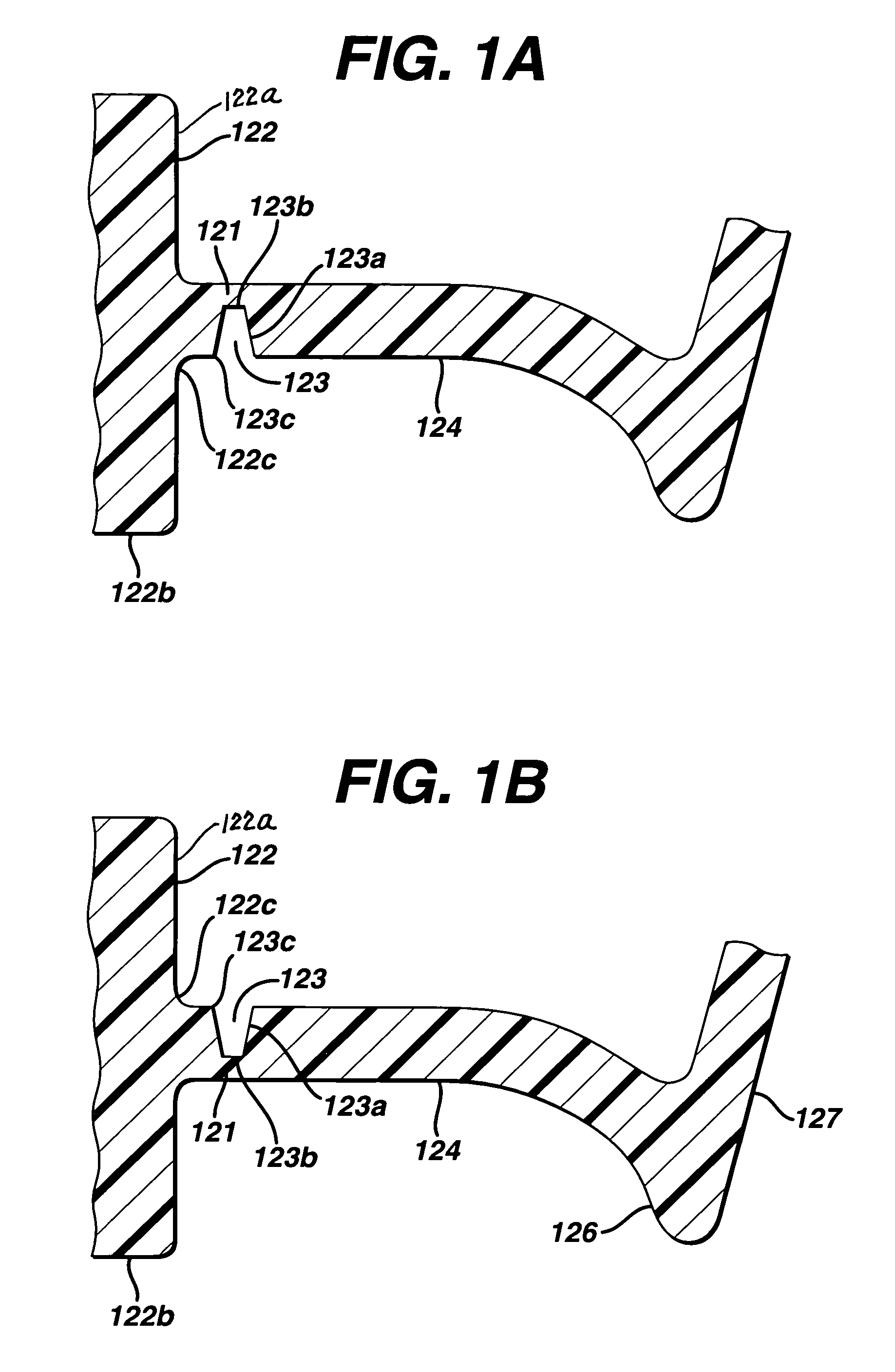End cap seal assembly for an electrochemical cell
a technology for sealing end caps and electrochemical cells, which is applied in the manufacture of cell components, final product details, and cell components, etc., can solve the problems of end caps, not designed to withstand radial compressive forces, and the cell's tendency to produce gases, etc., and achieves reliable sealing
- Summary
- Abstract
- Description
- Claims
- Application Information
AI Technical Summary
Benefits of technology
Problems solved by technology
Method used
Image
Examples
Embodiment Construction
[0026]A preferred structure of the end cap assembly 10 of the invention is illustrated in FIG. 1. An exploded view of the components of the end cap assembly 10 is shown in FIG. 2. An enlarged pictorial view of the insulating sealing disk before it is crimped into the cell is shown in FIG. 2A. A specific embodiment of the end cap assembly 10 integrated into an alkaline cell 100 is illustrated in FIG. 3. The end cap assembly 10 is applicable to cylindrical electrochemical cells, particularly cylindrical alkaline cells of standard AAA (44×9 mm), AA (49×12 mm), C (49×25 mm) and D (58×32 mm) size. The end cap assembly 10 provides a seal for the open end of cell housing (casing) 70 and also has incorporated therein exposed end cap 130. End cap 130 is in the form of a disk and may function as one of the cell's terminal's (negative terminal for alkaline cell) as shown in FIG. 3. The end cap 130 is also of a structure causing it to function as a radial spring. This allows the end cap assembl...
PUM
 Login to View More
Login to View More Abstract
Description
Claims
Application Information
 Login to View More
Login to View More - R&D
- Intellectual Property
- Life Sciences
- Materials
- Tech Scout
- Unparalleled Data Quality
- Higher Quality Content
- 60% Fewer Hallucinations
Browse by: Latest US Patents, China's latest patents, Technical Efficacy Thesaurus, Application Domain, Technology Topic, Popular Technical Reports.
© 2025 PatSnap. All rights reserved.Legal|Privacy policy|Modern Slavery Act Transparency Statement|Sitemap|About US| Contact US: help@patsnap.com



